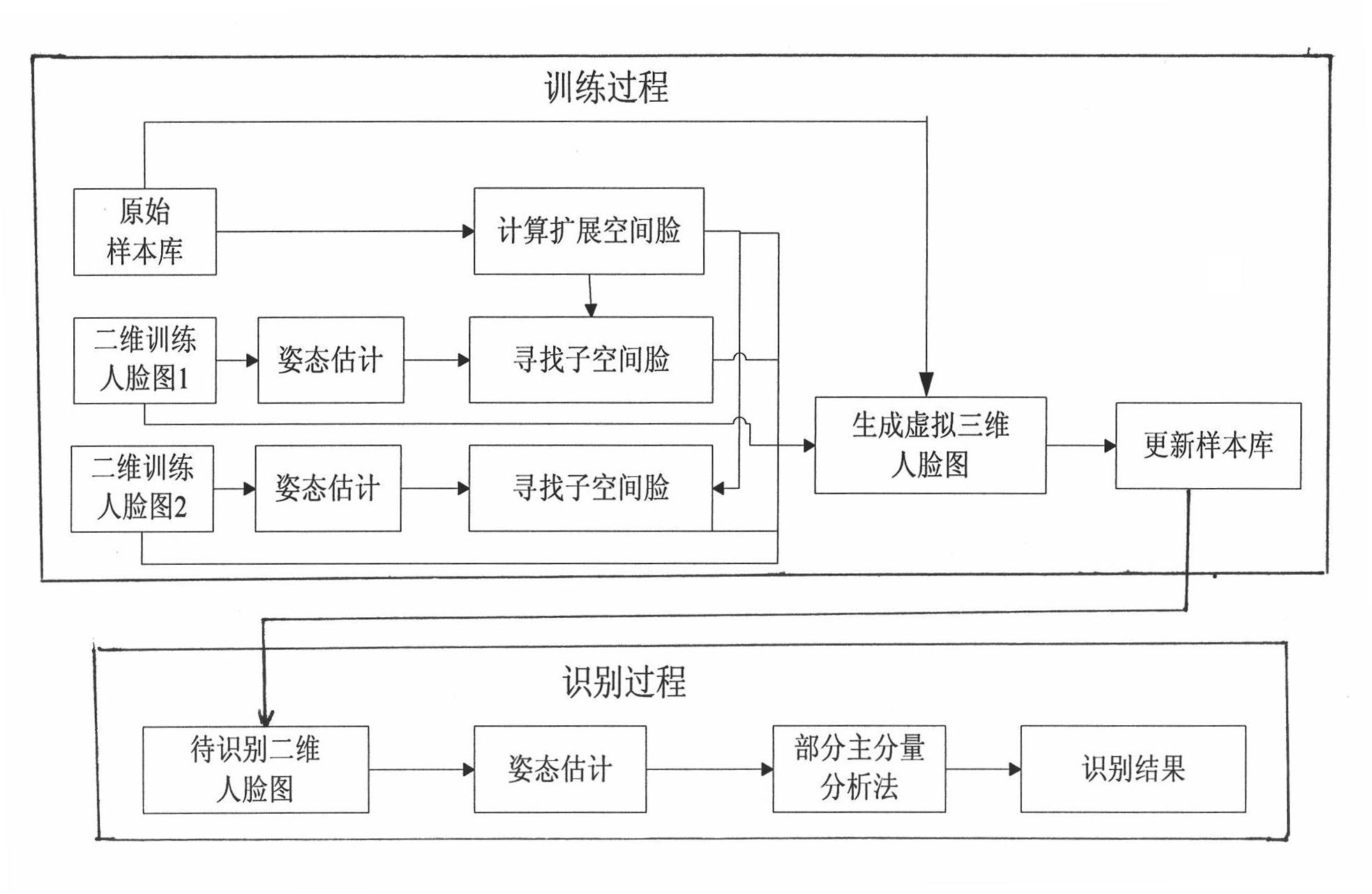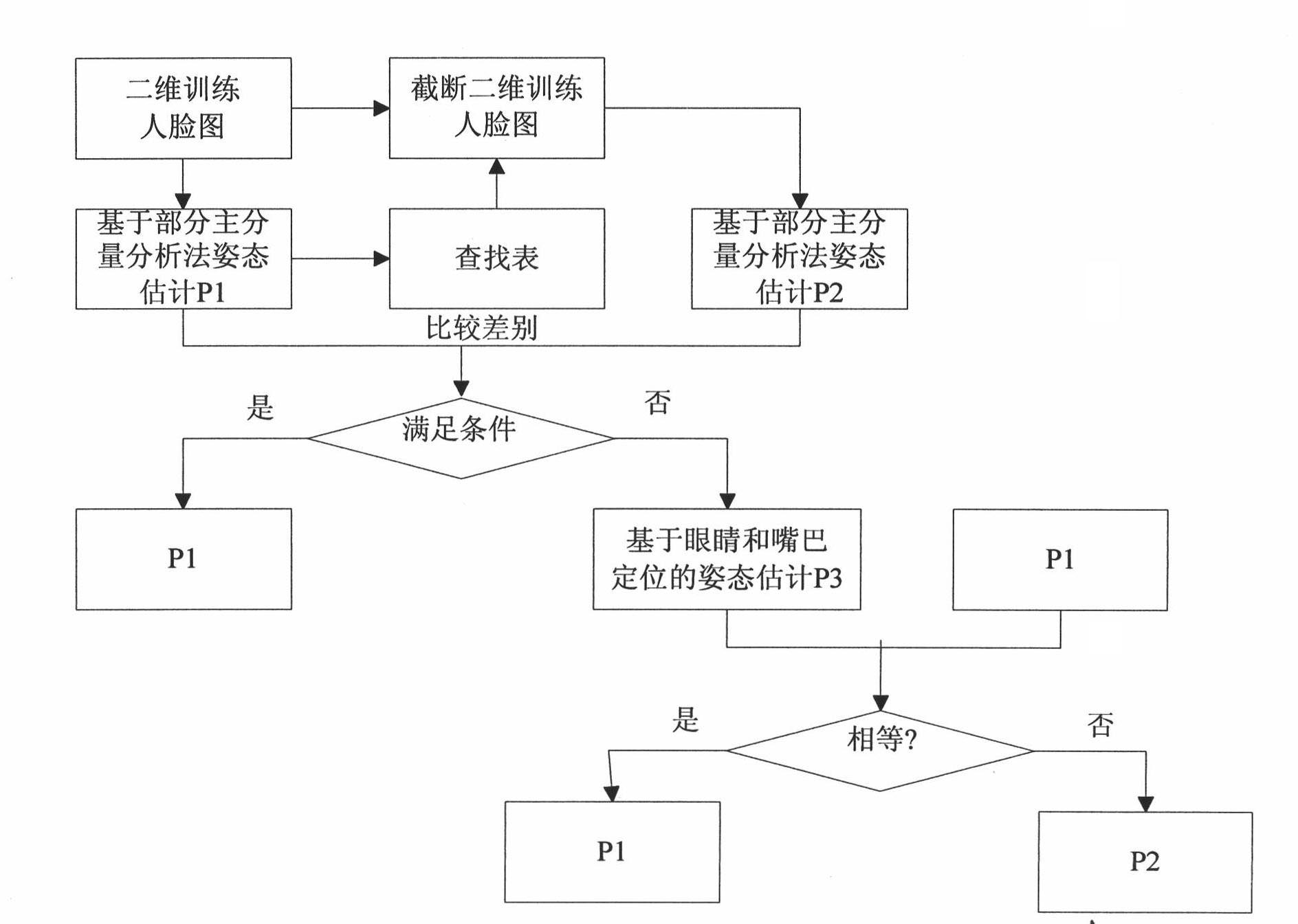Face recognition method based on combination of partial principal component analysis (PCA) and attitude estimation
A principal component analysis and attitude estimation technology, applied in the field of virtual three-dimensional face map, can solve the problems of inability to obtain three-dimensional information, large amount of calculation, inappropriate real-time processing, etc., to reduce complexity, high robustness, and beneficial to Effects of real-time processing
- Summary
- Abstract
- Description
- Claims
- Application Information
AI Technical Summary
Problems solved by technology
Method used
Image
Examples
Embodiment Construction
[0029] Below, in conjunction with the accompanying drawings and specific embodiments, the present invention will be further illustrated by taking the UPC face database as an example. The UPC face database is composed of 44 face images, and each person has 27 face images in 3 different lighting conditions (natural light, strong light in the direction of 45°, and strong light in the direction of 0°). 9 different attitudes (0°, ±30°, ±45°, ±60°, ±90°). The left face direction is assumed to be the positive direction. In this embodiment, only attitude changes under natural light are considered, and other lighting changes are not considered.
[0030] One, such as figure 1 As shown, the steps of this embodiment are as follows:
[0031] Step 1: Store the virtual three-dimensional face map in advance in the original sample library, and apply the principal component analysis method to calculate the extended face space in the original sample library:
[0032] The two-dimensional face...
PUM
 Login to View More
Login to View More Abstract
Description
Claims
Application Information
 Login to View More
Login to View More - R&D
- Intellectual Property
- Life Sciences
- Materials
- Tech Scout
- Unparalleled Data Quality
- Higher Quality Content
- 60% Fewer Hallucinations
Browse by: Latest US Patents, China's latest patents, Technical Efficacy Thesaurus, Application Domain, Technology Topic, Popular Technical Reports.
© 2025 PatSnap. All rights reserved.Legal|Privacy policy|Modern Slavery Act Transparency Statement|Sitemap|About US| Contact US: help@patsnap.com



